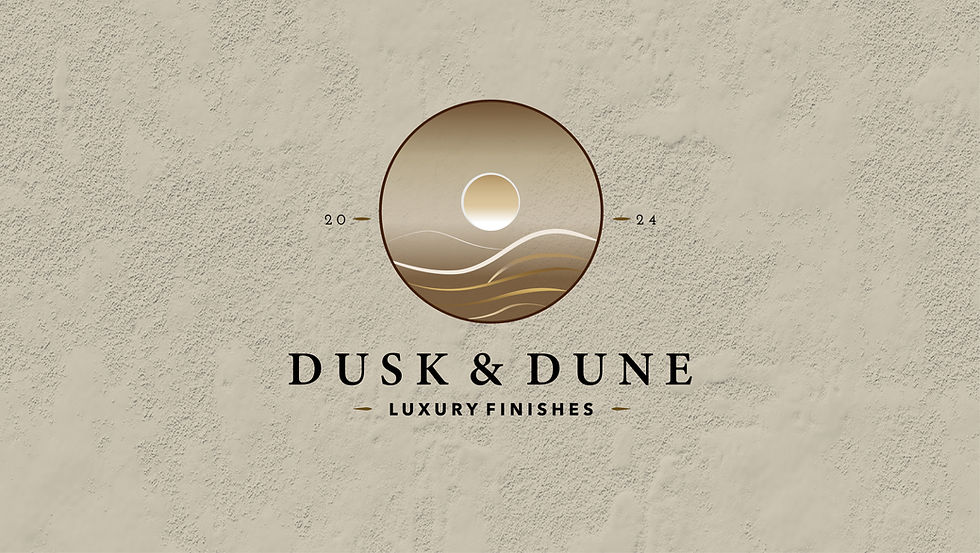Microcement vs Tiles: Which Is Better for Dubai Homes?
- Jacob Cohen

- May 7
- 4 min read
When considering flooring and wall finishes for homes in Dubai, two popular options come to mind: microcement vs tiles. Tiles have long been a staple, but microcement is making waves among architects and interior designers. Its unique characteristics and modern appeal make it a strong contender for contemporary living spaces. So, which option is the best fit for Dubai's unique style and climate?
What is Microcement?
Microcement is a modern material made from a mixture of cement, water-based polymers, and pigments. This formula results in a thin finish, typically only 2 to 3 millimetres thick. Microcement can be applied to various surfaces, including floors and walls, offering a sleek and stylish look that seamlessly blends into any design.
The option to customise microcement with different colours and textures is a major draw for designers. In a city known for its luxury and innovative designs, microcement is a perfect match for the upscale trends present in Dubai's interiors.

The Benefits of Microcement in Dubai Homes
Microcement has a number of advantages that appeal to homeowners and designers in Dubai:
Seamless Finish: Microcement delivers a continuous surface with minimal grout lines. This creates a clean and modern appearance that enhances the visual space of any room.
Durability: Known for its resilience, microcement is resistant to cracks, stains, and water. In Dubai's harsh climate, where temperatures can swing dramatically, this durability is particularly valuable.
Versatility: Microcement can be used on floors, walls, and even furniture. Homeowners can achieve a consistent look throughout their properties by using it in multiple applications.
Easy Maintenance: Keeping microcement looking beautiful is simple—just a quick wipe-down is typically all it requires. With occasional resealing, microcement surfaces can last for years without losing their appeal.
Eco-Friendly: Many microcement varieties contain low levels of volatile organic compounds (VOCs). This aligns well with the growing trend towards sustainability in home design, making microcement an environmentally conscious choice. Dusk & Dune strictly uses completely VOC-free microcement with Topcret's Eco Range
Renovation Without Demolition: Tiles usually mean dust, noise, and demolition. Microcement is only 2–3mm thick and can be applied directly over your existing floors or walls — tile, concrete, plaster, and more. That means faster projects, lower labour costs, and zero waste from demolition and disposal.
Understanding Tiles
Tiles have been a dependable option for flooring and wall finishes for many years. They come in diverse materials such as ceramic, porcelain, and natural stone, providing numerous styles, colours, and designs. While tiles remain a common choice for Dubai homes, they do have some limitations that may not meet modern design needs.

The Advantages of Tiles
Tiles come with their own set of significant benefits:
Variety: Tiles are available in countless materials and designs. Whether you prefer classic styles or contemporary looks, you can find the perfect tile to fit your aesthetic.
Water Resistance: Most tiles are resistant to moisture, making them excellent for areas like bathrooms and kitchens, where leaks are a concern.
Cost-Effectiveness: Generally, tiles are more affordable than microcement upfront. This can make them a practical choice for larger areas.
Tradition and Familiarity: Tiles have a long-standing reputation for their reliability. Many homeowners feel comfortable opting for a well-known option that has stood the test of time.
Comparing Microcement and Tiles
To help you understand the differences between microcement and tiles, here is a comparison of their features:
Aesthetics
Opting for microcement provides a modern, uninterrupted look that enhances the overall atmosphere of a room. In contrast, tiles, while stylish, can appear segmented due to visible grout lines. If contemporary design is important to you, microcement is likely the better option.
Installation
Installing microcement can often be quicker. Its thin application saves time compared to the detailed cutting and grouting process required for tiles. If you're looking to complete renovations swiftly, microcement is a strong candidate.
Durability and Maintenance
Though both options are durable, microcement tends to offer more flexibility and is less prone to cracking in the heat. Tiles, while generally tough, can become chipped or cracked in certain conditions. Microcement also requires less maintenance.
Cost Considerations
Tiles are typically less expensive initially, making them appealing for those on a budget. However, when you consider the long-term benefits of microcement, such as durability and low maintenance, the higher initial investment cost may be worthwhile. Homeowners should evaluate both options based on their specific needs and budgets.

Choosing the Best Option for Your Home
The choice between microcement and tiles ultimately hinges on personal preferences and lifestyle requirements. If seamless surfaces, modern design, and low upkeep are appealing to you, microcement could be your best bet.
On the other hand, if you prioritise variety, water resistance, and cost, tiles may be the way to go.
Final Thoughts
In the dynamic landscape of Dubai's architecture, both microcement and tiles provide attractive flooring and wall finishing options. Microcement's stylish, modern look and durability are appealing for those seeking cutting-edge designs without sacrificing practicality. Meanwhile, tiles continue to serve as a reliable option, offering diverse choices for those with traditional tastes.
Your final decision should align with your preferred style, budget, and desired atmosphere in your home. Take time to consider all aspects and make an informed choice that reflects the essence of modern Dubai living.
Ready to Upgrade?
Contact Dusk & Dune to explore your options — or request a sample finish to compare microcement with traditional tiles in your own space.



Comments